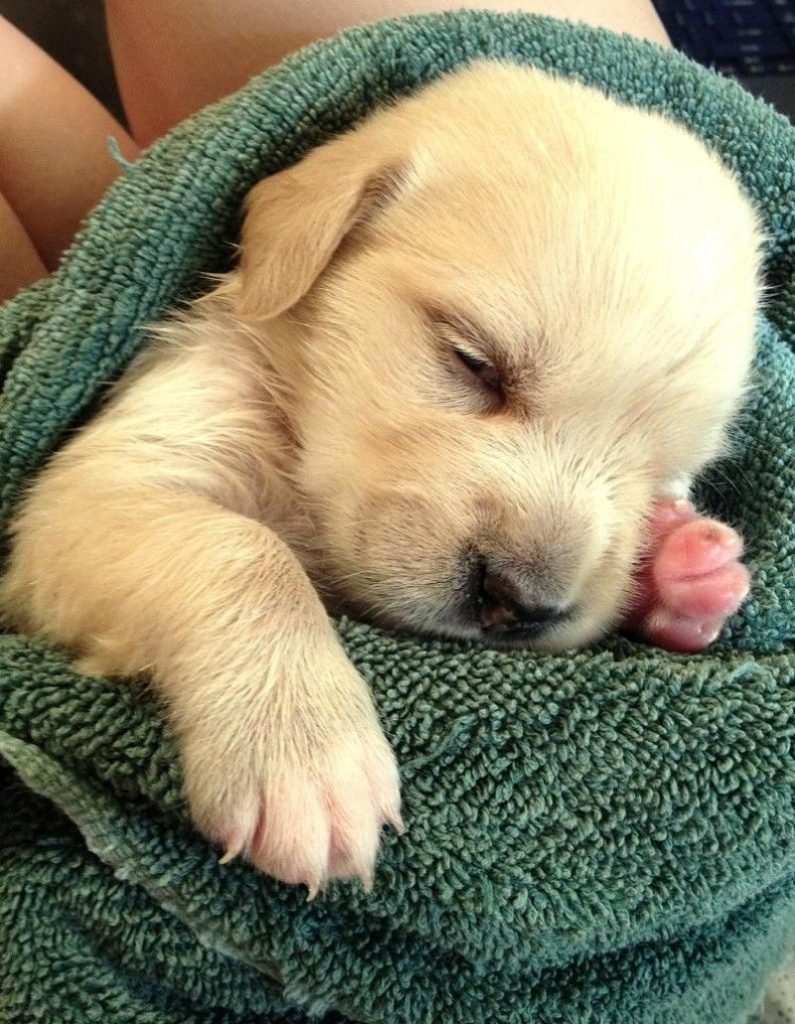Ah, the world of dog training toys is a delightful realm of innovation and fun. These aren’t just any old toys; they’re meticulously designed tools that can turn a simple playtime into a powerful training session. Whether you’re looking to teach your furry friend a new trick or reinforce good behavior, the right dog training toy can make all the difference. So, let’s dive into the heart of this exciting world and discover where to find the best, most engaging, and most beneficial toys for your four-legged companion.
The Ultimate Guide to Choosing the Perfect Dog Training Toy
Navigating the world of dog training toys can feel like a treasure hunt for the perfect companion to aid in your furry friend’s development. Whether you’re looking to teach basic commands, enhance cognitive skills, or simply keep your pup engaged and entertained, choosing the right training toy is crucial. Here’s a comprehensive guide to help you find the perfect dog training toy that suits your dog’s needs and preferences.
When it comes to selecting a dog training toy, it’s important to consider your dog’s breed, size, age, and temperament. Larger breeds might benefit from stronger, more durable toys, while smaller dogs might prefer lightweight and easy-to-carry items. Puppies require toys that are safe and can withstand their destructive tendencies, while older dogs may appreciate toys that stimulate their minds without straining their joints.
First and foremost, safety should be your top priority. Ensure that the toy is free from small parts that could pose a choking hazard, and that it’s made from non-toxic materials. For puppies, especially, look for toys with no hard edges to prevent any injuries.
Interactive toys can significantly enhance the training experience. These are designed to engage your dog’s natural curiosity and intelligence. Puzzle toys, for instance, can keep your dog busy for hours while also reinforcing their problem-solving skills. Tug-of-war toys can be great for reinforcing commands like “come” or “drop it,” while also providing physical exercise.
One of the most popular types of training toys is the treat-dispensing toy. These come in various shapes and sizes and can be filled with your dog’s favorite snacks. Not only do they provide a tasty incentive for good behavior, but they also help with mental stimulation. Dogs learn to work for their treats, which can translate to better focus during training sessions.
When shopping for a dog training toy, pay attention to the durability. The best toys are made to withstand a fair amount of abuse, especially if you have a power chewer on your hands. Look for toys that are labeled as “indestructible” or “heavy-duty,” as these are usually made from tough materials like rubber, metal, or nylon.
Another important feature to consider is the ease of cleaning. Some toys are more hygienic than others, especially if your dog has a tendency to slobber or chew on their toys. Look for toys that are dishwasher-safe or can be easily cleaned with soap and water.
Don’t underestimate the value of a good ol’-fashioned ball. Kicking or throwing a ball can be an excellent way to get your dog moving, reinforce commands, and provide a fun outlet for energy. Balls come in various sizes and materials, so find one that suits your dog’s size and play style.
It’s also worth considering the versatility of the toy. Some toys can be used for different purposes, such as fetching, hiding treats, or playing hide and seek. A versatile toy can be a game-changer for your training routine, allowing you to switch up activities and keep things interesting for both you and your dog.
Personalization can also play a role in selecting the perfect dog training toy. Many toys come with customizable options, such as adjustable resistance for tug-of-war toys or interchangeable parts for puzzle toys. Personalizing the toy to your dog’s liking can make training sessions more enjoyable and engaging.
Remember, the best dog training toy is one that your dog enjoys and responds to. Watch your dog’s interactions with different toys to see which ones capture their interest. A toy that your dog loves and uses frequently will be far more effective in your training efforts than one that is ignored or forgotten.
In conclusion, choosing the right dog training toy involves considering your dog’s specific needs and preferences. Look for safety features, durability, interactive elements, and personalization options. With the right toy in hand, you’ll be well on your way to creating a fun and effective training experience that strengthens the bond between you and your canine companion.
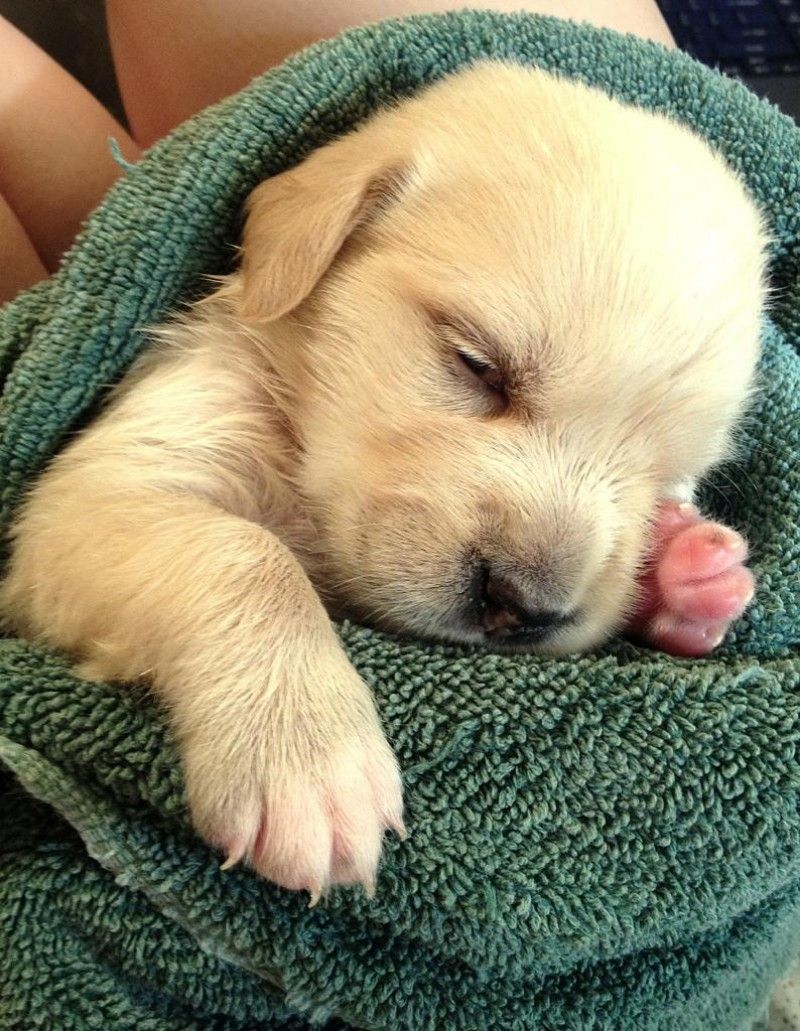
Understanding the Importance of Interactive Toys for Dog Training
Interactive toys are more than just fun for your furry friend; they play a crucial role in dog training. Here’s why they’re a must-have in your training arsenal.
-
Stimulating Cognitive Development: Interactive toys challenge your dog’s mind, helping to stimulate their cognitive development. Dogs are naturally curious and intelligent creatures, and these toys provide the perfect outlet for their problem-solving skills. By engaging with these toys, your dog can learn new commands and tricks, which in turn enhances their mental well-being.
-
Reducing Boredom and Destructive Behavior: Left to their own devices, dogs can become bored, leading to destructive behavior such as chewing on furniture or digging in the yard. Interactive toys provide a constructive way for your dog to channel their energy, reducing the likelihood of these unwanted behaviors.
-
Encouraging Physical Activity: Many interactive toys are designed to encourage physical activity, which is essential for maintaining a healthy weight and preventing obesity in dogs. Toys that require your dog to move, fetch, or chase after an object can help keep them fit and active.
-
Building a Stronger Bond: Training sessions with interactive toys can strengthen the bond between you and your dog. These toys often require your presence and guidance, which can lead to more quality time and a deeper connection.
-
Teaching Patience and Focus: Interactive toys can be a great tool for teaching your dog patience and focus. Many of these toys are designed to be challenging, requiring your dog to wait for a reward or figure out how to use the toy. This patience can translate into better behavior during regular training sessions.
-
Enhancing Training Techniques: Interactive toys can be incorporated into various training techniques, making the process more dynamic and engaging. For example, you can use puzzle toys to teach your dog to follow commands while they work to obtain a treat, which can make the training experience more enjoyable for both of you.
-
Teaching Self-Entertainment: One of the key benefits of interactive toys is that they teach your dog how to entertain themselves. This is particularly important for dogs that are left alone for extended periods, as it can prevent separation anxiety and destructive behavior when you’re not home.
-
Promoting Healthy Eating Habits: Some interactive toys are designed to dispense treats slowly, which can help prevent overeating and encourage your dog to eat more slowly. This can be beneficial for dogs with weight management issues or those prone to bloating.
-
Providing Mental Stimulation: Dogs that are mentally stimulated are less likely to develop behavioral problems due to boredom. Interactive toys provide a constant source of mental stimulation, which can keep your dog’s mind sharp and engaged.
-
Adapting to Different Training Needs: Interactive toys come in a variety of shapes, sizes, and complexities, making them suitable for dogs of all ages, breeds, and training levels. Whether you’re working on basic obedience or advanced agility training, there’s an interactive toy that can fit your needs.
In conclusion, interactive toys are an invaluable addition to any dog training regimen. They offer a multitude of benefits, from enhancing cognitive and physical health to building a stronger bond with your furry companion. By incorporating these toys into your training routine, you can create a more engaging and effective training experience for both you and your dog.
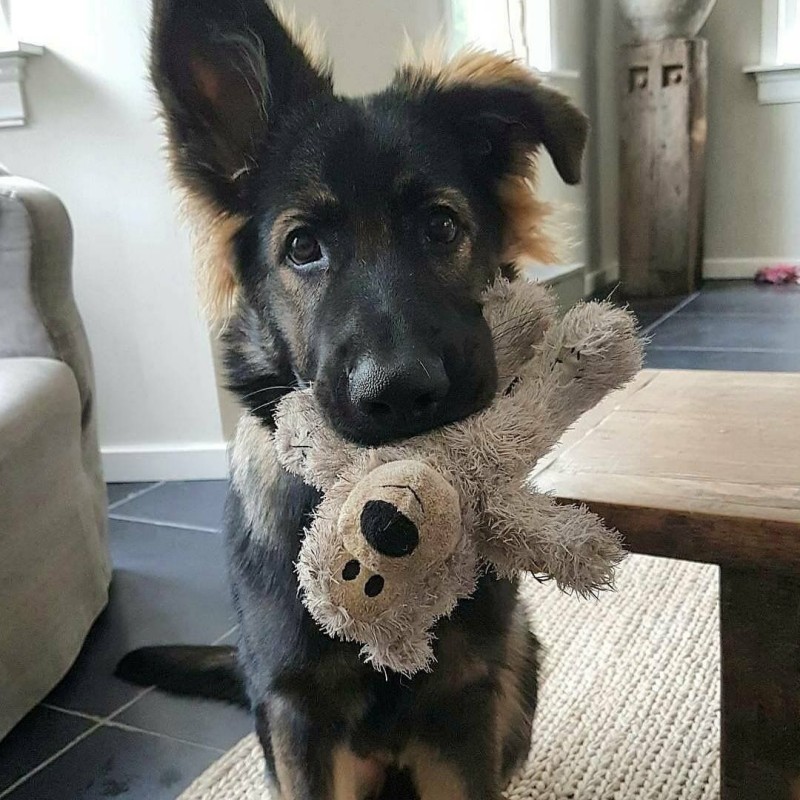
Top Features to Look for in a Dog Training Toy
When selecting the perfect dog training toy, it’s crucial to consider certain features that not only make the toy engaging for your furry friend but also enhance the training process. Here are some top features to look for:
-
Durability: A sturdy construction is a must. Dogs can be rough on toys, so ensure that the material is resilient and able to withstand chewing, tugging, and general wear and tear. Look for toys made from heavy-duty materials like natural rubber, sturdy fabric, or reinforced plastic.
-
Size and Shape: The size and shape of the toy should be appropriate for your dog’s breed and size. A toy that’s too small can be easily swallowed, while one that’s too large may not be as engaging. Consider your dog’s mouth size and strength when choosing the right dimensions.
-
Interactive Elements: Interactive toys stimulate your dog’s mind and keep them engaged. Look for toys with features like buttons, puzzles, or hidden treats that encourage your dog to problem-solve and use their natural instincts to find rewards.
-
Sound and Movement: Toys that make noise or move in response to your dog’s actions can be incredibly effective. The sound can grab your dog’s attention, and the movement can mimic the action of a real-life prey, enhancing the play experience and the training session.
-
Safety: Always prioritize safety. Make sure the toy is free of sharp edges, small parts that can be easily torn off and swallowed, or toxic materials. Non-toxic, BPA-free plastics and eco-friendly materials are great choices.
-
Versatility: A good training toy can serve multiple purposes. Consider a toy that can be used for various training exercises, such as teaching fetch, tug-of-war, or even basic commands. This way, you’re not just investing in one toy but a range of training tools in one.
-
Comfort: Some dogs get stressed or overwhelmed during training sessions. Look for toys that provide a sense of comfort, such as plush toys with a soft texture or a toy that can be filled with calming scents like lavender or chamomile.
-
Easy to Clean: Dogs can track in dirt, mud, and various contaminants. A toy that is easy to clean not only keeps your home cleaner but also ensures the toy remains hygienic for your pet. Toys that can be thrown in the dishwasher or washed by hand are ideal.
-
Customizable Difficulty: As your dog progresses in their training, you may want to increase the challenge. Look for toys that offer adjustable difficulty levels, such as puzzles with removable pieces or treat dispensers with varying levels of difficulty.
-
Positive Reinforcement: The best training toys are those that can be used as part of a positive reinforcement program. Choose a toy that can be associated with treats or praise, reinforcing good behavior and making training sessions more enjoyable for both you and your dog.
Remember, the best dog training toy is one that matches your dog’s personality, preferences, and training needs. By focusing on these features, you can find a toy that not only aids in training but also brings joy and enrichment to your dog’s life.

Our Top Picks: Dog Training Toys That Stand Out
When it comes to dog training toys, finding the right one can make all the difference in your pup’s learning journey. Here are some of our top picks that have proven to be winners in the world of canine education and playtime.
-
The Tug-a-Jug Squeaky Ball: This interactive toy is not just fun but also incredibly effective for training. Its unique design encourages dogs to use their paws to push the ball around, which helps with coordination and engagement. The squeaker inside adds an extra layer of excitement and reinforces commands.
-
The Hide-a-Squirrel Puzzle Toy: Perfect for dogs that need a mental challenge, this toy resembles a squirrel that hides treats within its “body.” It’s designed to stimulate problem-solving skills and keep your dog’s mind active. The unpredictable placement of treats makes it a great tool for teaching patience and persistence.
-
The Snuffle Mat: A versatile and durable mat that is great for hiding treats and encouraging your dog to use their nose to find them. It’s excellent for reinforcing scent work and can be used in conjunction with training commands, making it an all-in-one tool for both mental and physical exercise.
-
The Treat Ball: Designed for dogs that are food-motivated, this ball is perfect for hiding kibble or small treats while your dog plays. It’s adjustable so you can control the difficulty level, which is great for gradually increasing the challenge as your dog’s training progresses.
-
The Interactive Treat Dispenser: This is a fantastic toy for dogs that need a bit of mental stimulation and a way to work for their treats. It comes with different levels of difficulty, and you can load it with your dog’s favorite snacks. It’s a great way to keep your dog busy and entertained while reinforcing good behavior.
-
The Flirt Pole: While not a traditional training toy, the flirt pole is a must-have for dogs that need physical exercise and mental stimulation. It’s a long rod with a rope attached to the end, which you can wave around to mimic a bird or mouse. It’s great for playing fetch and encouraging your dog to chase and leap.
-
The KONG Toy: A classic in the world of dog toys, the KONG is an indestructible rubber toy that can be filled with treats or kibble. It’s perfect for both training and play, and you can adjust the difficulty by adding peanut butter or freezing the toy with treats inside for a longer-lasting challenge.
-
The Leash with a Treat Dispenser: This innovative leash is a game-changer for training. It features a treat dispenser that releases treats when your dog walks or follows commands, providing immediate rewards and motivation. It’s a great tool for teaching heel, sit, and stay commands.
-
The Puzzle Mat: Similar to the snuffle mat but with a mat base, this toy is great for both indoor and outdoor use. It has various compartments to hide treats, and your dog will have to search and use their paws to get to the treats, enhancing their motor skills and problem-solving abilities.
-
The Interactive Electronic Toy: For dogs that thrive on technology, this toy combines sound, lights, and movement to engage your dog’s senses. It can be programmed to release treats at different intervals, making it a versatile and fun way to keep your dog entertained and trained.
Each of these toys has its unique qualities that make them stand out in the world of dog training. Whether you’re looking to enhance your dog’s mental stimulation, provide physical exercise, or reinforce training commands, these top picks are sure to be a hit with both you and your furry friend.
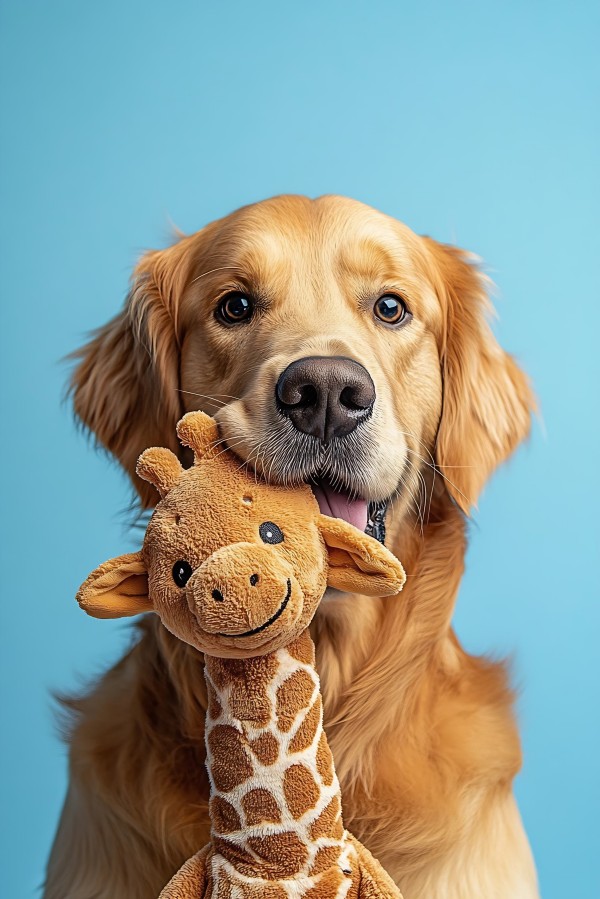
How to Use Dog Training Toys Effectively
Finding the right dog training toy can make a significant difference in your training sessions. Here’s how to use them effectively:
-
Engage with Your Dog’s Natural Instincts: Dogs are natural predators, and toys can tap into this instinct, providing an outlet for their hunting and chasing behaviors. By using toys that mimic real prey, you can keep your dog engaged and focused during training.
-
Teach New Commands: Use toys as a reward for your dog learning new commands. For example, when your dog successfully follows a new cue, such as “sit” or “stay,” you can offer a treat or a toy to reinforce the behavior. This not only strengthens the command but also reinforces the association between the action and the reward.
-
Encourage Problem-Solving Skills: Interactive toys that require your dog to think and figure out how to get to the treat can be incredibly beneficial. Puzzle toys, for instance, challenge your dog’s problem-solving abilities and can improve their mental stimulation, which is just as important as physical activity.
-
Use Toys for Physical Exercise: Toys can also be a great way to get your dog moving. Tug-of-war toys or fetch toys can help your dog burn off excess energy and maintain a healthy weight. Physical activity through play can also reduce the likelihood of obesity, joint issues, and other health problems associated with a sedentary lifestyle.
-
Incorporate Clickers or Treats: Pairing a dog training toy with a clicker or treats can enhance the effectiveness of your training. The clicker provides an immediate, consistent signal that your dog has performed correctly, which can speed up the learning process. Always ensure the toy is used as a complement to the clicker or treat, not a replacement.
-
Vary the Toys and Techniques: Don’t rely on just one type of toy for training. Varying the toys and the way you use them can keep your dog’s interest and prevent boredom. For example, a treat-filled Kong can be used differently each time—hidden under a blanket, rolled in peanut butter, or filled with a variety of foods to keep the game interesting.
-
Use Toys to Help with Behavioral Issues: Some dogs may have specific behavioral issues, such as anxiety or separation anxiety. Using calming toys, such as aThundershirt or a calming mat, can help soothe your dog during these times. Toys can also provide comfort and a sense of security when introducing new pets or in situations that might be stressful for your dog.
-
Train in Short Sessions: When using toys in your training, keep the sessions short and sweet. Dogs have shorter attention spans than humans, and long training sessions can lead to frustration for both you and your furry friend. Short, focused sessions can be more effective and keep your dog’s attention.
-
Monitor Your Dog’s Interactions: Always supervise your dog when they are playing with training toys, especially if they are new or have a history of destructive behavior. This ensures that the toy is being used safely and that your dog isn’t engaging in behaviors that could be harmful.
-
Teach Your Dog to Use the Toy: Show your dog how to interact with the toy correctly. For example, if you’re using a ball, demonstrate how to hold it properly and throw it. This can prevent your dog from damaging the toy or developing bad habits.
-
Consistency is Key: Consistency is crucial when using toys for training. Make sure that everyone in the household uses the same commands and reinforces the same behaviors to avoid confusion for your dog.
Remember, the key to using dog training toys effectively is to understand your dog’s preferences and behavior. Each dog is unique, so what works for one may not work for another. Pay attention to how your dog responds to different types of toys and be willing to adapt your approach to meet their needs. With the right toy and a bit of creativity, you can create training sessions that are both fun and educational for your four-legged companion.

Innovative Designs for Enhanced Training Sessions
Dog training toys have evolved beyond simple bones and balls. Today, innovative designs are at the forefront, enhancing training sessions with engaging features and interactive elements. Here’s a look at some innovative designs that can elevate your dog’s training experience:
-
Smart Toys with Built-In Sensors: Modern dog training toys often come equipped with sensors that can detect when your dog interacts with them. These smart toys can track your dog’s progress, reward them with treats, and even provide feedback to help you tailor your training methods.
-
Interactive Treat Dispensers: These toys are not just for giving your dog a treat; they’re designed to encourage problem-solving skills. By inserting treats into the toy, your dog must figure out how to get to them, which can be a fun and mentally stimulating activity.
-
Puzzle Toys for Cognitive Development: Many dogs thrive on mental challenges. Puzzle toys come in various shapes and sizes, requiring your pup to manipulate parts, turn wheels, or slide pieces to reveal hidden treats. This not only keeps them occupied but also enhances their cognitive abilities.
-
Teether Toys for Puppies: Puppies are notorious for teething, and the right toy can make this stage more comfortable. Innovative teether toys are often made from materials that mimic the feel of mother’s milk teeth, providing relief while also helping to clean your puppy’s teeth.
-
Reflective Toys for Night Training: If you’re working on house training or any other nighttime routines, a reflective toy can be a game-changer. These toys have a special coating that reflects light, making them visible to both you and your dog in low-light conditions.
-
Sound-Activated Toys: Some dogs respond well to sounds, and sound-activated toys can be a powerful tool in training. These toys can emit different sounds to signal commands or encourage specific behaviors, helping to reinforce training exercises.
-
Collapsible and Portable Toys: For those who enjoy outdoor activities or live in smaller spaces, portable training toys are essential. Collapsible designs not only save space but also allow you to bring your dog’s favorite toy along on the go, ensuring continuous engagement during training sessions.
-
Multi-Function Toys: Combining several features into one toy can save space and make training more versatile. Look for toys that can be used for tug-of-war, fetch, and even as a treat dispenser, providing a range of training exercises in one item.
-
Toys with Removable Parts: These toys are great for dogs that like to chew or for teaching separation of parts. By allowing your dog to remove and manipulate different parts, you can encourage them to focus on the task at hand and practice their problem-solving skills.
-
Customizable Toys: Some toys come with customizable options, such as adjustable difficulty levels or removable parts that can be replaced with different scents or treats. This allows you to tailor the toy to your dog’s specific needs and interests.
Remember, the key to using innovative dog training toys effectively is to choose one that matches your dog’s personality and learning style. Observe how your dog interacts with the toy and be prepared to adjust your approach if something isn’t working. With the right tool, you can make training sessions more enjoyable for both you and your furry friend, fostering a stronger bond and more effective training outcomes.

Real-Life Success Stories: Transforming Your Dog with Training Toys
In the world of dog training, there are countless success stories where a well-chosen toy has made all the difference. Here are a few tales that highlight how training toys can truly transform a dog’s behavior and their bond with their owner.
-
Max’s Journey from Biter to Beloved: Once a frequent biter, Max, a young Labrador, found himself at the end of his leash. His owner, Sarah, was at her wit’s end, until she discovered a durable chew toy that became Max’s new favorite. Each time Max felt the urge to bite, Sarah redirected him to the toy, reinforcing the idea that chewing on the right thing was a positive activity. Slowly but surely, Max’s destructive habits faded away, and he became a gentle, affectionate companion.
-
Luna’s Playtime Potty Training: Potty training can be a challenging process, but for Luna, a Chihuahua, it was made easier with a special potty training toy. The toy was designed to simulate the feeling of grass, which helped Luna understand that she could go to the bathroom on it, just like she would outdoors. With consistent use and positive reinforcement, Luna mastered the art of potty training, much to the relief of her owners.
-
Buddy’s New Best Friend: Buddy, a high-energy Jack Russell, was a handful without proper exercise. His owner, Mike, tried various toys, but none seemed to capture Buddy’s attention until he found a puzzle toy that required the dog to work for his treats. The toy not only engaged Buddy physically but also mentally, which helped to tire him out faster and reduce his hyperactivity. Buddy’s newfound love for the puzzle toy became a cornerstone of their daily routine.
-
Charlie’s Confidence Boost: Charlie, a rescue dog with a history of shyness, found comfort in a soft, plush toy with a squeaker. This toy became his sanctuary during times of stress or anxiety. By using the toy as a reward for calm behavior, Charlie’s owner, Emily, was able to gradually introduce Charlie to new environments and people. The toy was a symbol of safety and security, helping Charlie build the confidence he needed to thrive.
-
Daisy’s Dance of Joy: Daisy, a senior Golden Retriever, had difficulty with her mobility due to arthritis. Her owner, Tom, invested in a toy that was easy to grip and toss, allowing Daisy to continue enjoying playtime despite her limitations. The toy was lightweight and had a built-in rope, which Tom used to engage Daisy in a game of tug-of-war. This activity helped to keep Daisy’s joints flexible and her spirits high.
-
Oscar’s Obedience Revolution: Oscar, a young German Shepherd, struggled with obedience commands. His owner, Lisa, decided to incorporate a treat-dispensing toy into their training sessions. The toy required Oscar to perform certain commands to release the treats, which made the training process more interactive and fun for him. Over time, Oscar’s obedience improved significantly, and the toy became a tool for reinforcing good behavior.
-
Milo’s Mind-Expanding Adventures: Milo, a curious Beagle, was always on the prowl for new experiences. His owner, Jamie, found a series of interactive toys that challenged Milo’s problem-solving skills. From hidden treat puzzles to scent-based games, these toys kept Milo engaged and his mind sharp. The toys also helped Milo to learn new tricks and commands, as he was motivated by the mental stimulation.
-
Ruby’s Reward for Patience: Ruby, a Black Russian Terrier, was patient and gentle, but her owners wanted to reinforce her calm demeanor. They introduced a toy that rewarded Ruby with treats for staying still and not jumping. This not only taught Ruby the value of patience but also gave her a constructive way to earn rewards. The toy became a symbol of Ruby’s good behavior and a way to keep her occupied during long car rides or visits to the vet.
These stories illustrate the power of training toys in transforming dogs’ behaviors and lives. Whether it’s through physical exercise, mental stimulation, or emotional support, the right toy can make a significant impact on your dog’s training journey.
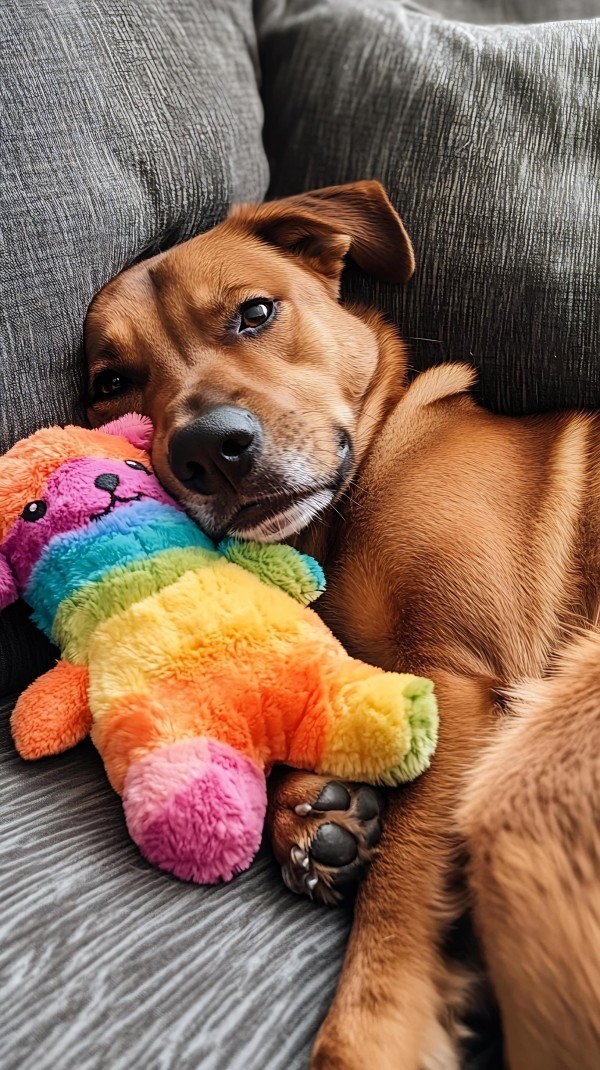
The Benefits of Investing in High-Quality Dog Training Toys
Investing in high-quality dog training toys can make a significant difference in your pet’s development and your training experience. Here are some of the key benefits that come with choosing top-tier training toys:
-
Longevity and Durability: High-quality toys are typically made from robust materials that can withstand the rigors of play. This means they are less likely to tear or break, saving you money in the long run and ensuring your dog has a toy that lasts through countless play sessions.
-
Safety First: A well-crafted dog training toy is free from harmful chemicals, sharp edges, and small parts that could pose a choking risk. This peace of mind allows you to focus on training without worrying about your dog’s safety.
-
Stimulating Engagement: Top-tier toys are designed to engage your dog’s mind and body. From puzzles that challenge problem-solving skills to toys that encourage physical activity, these items can keep your dog’s brain active and prevent boredom.
-
Healthier Lifestyle: Using interactive toys can lead to a healthier lifestyle for your dog. Toys that require your dog to move and play can help with weight management, as well as reduce the risk of obesity and joint issues that come with excessive weight.
-
Improved Behavior: High-quality training toys can be used to reinforce positive behavior. For example, a treat-dispensing toy can encourage your dog to stay engaged and perform commands, as they work to earn their reward.
-
Customization for Different Needs: A wide range of high-quality toys allows for customization based on your dog’s specific needs. Whether your dog is a chewer, a puller, or needs help with anxiety, there’s a toy designed to address these issues.
-
Bonding Opportunities: Toys that require your presence or interaction can help strengthen the bond between you and your dog. Training sessions become more than just a way to teach; they become moments of shared joy and connection.
-
Variety in Training: High-quality toys offer a variety of textures, sizes, and shapes, which can help you keep your training sessions interesting and varied. This variety can prevent your dog from becoming bored with repetitive exercises.
-
Ease of Cleaning: Many high-quality training toys are easy to clean, which is essential for maintaining hygiene. Some can be tossed in the dishwasher, while others simply need a wipe down with a damp cloth.
-
Educational Value: Interactive toys often come with an educational element, such as teaching your dog to recognize shapes, colors, or even to learn how to use their paws. This educational aspect can contribute to a more well-rounded pet.
-
Eco-Friendly Options: Investing in high-quality toys that are made from sustainable materials is not only good for your dog but also for the environment. Eco-friendly toys are becoming increasingly popular, and they offer a responsible alternative to traditional options.
-
Customization for Specific Goals: Whether you’re working on basic obedience commands, advanced tricks, or specific behavioral issues, high-quality training toys can be tailored to your dog’s needs and your training goals.
-
Increased Confidence: Using the right training toys can help build your dog’s confidence. Toys that allow for success, even if it’s in small increments, can help your dog feel more secure in their abilities.
-
Prevention of Boredom and Destructive Behavior: Dogs that are left unoccupied can become bored and may exhibit destructive behavior. High-quality training toys provide an outlet for your dog’s energy, reducing the likelihood of destructive chewing or other unwanted behaviors.
-
Professional Endorsements: Many high-quality training toys have been endorsed by professional dog trainers and veterinarians, which can give you peace of mind that the toy is suitable for your dog’s needs.
In conclusion, the benefits of investing in high-quality dog training toys are multifaceted, from enhancing your dog’s physical and mental health to deepening the bond between you and your furry friend. By choosing toys that are durable, safe, and engaging, you’re not just investing in a toy; you’re investing in your dog’s overall well-being and your training success.
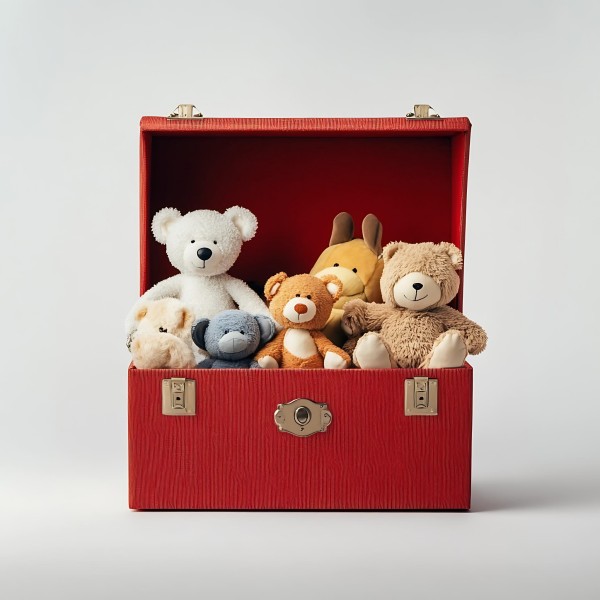
Tips for Maintaining and Cleaning Your Dog Training Toys
Keeping your dog training toys in top condition not only prolongs their lifespan but also ensures they remain effective tools in your training arsenal. Here are some essential tips for maintaining and cleaning these valuable companions:
Regular InspectionsRegularly check your dog training toys for any signs of wear and tear. Look for frayed edges, loose parts, or any damage that could pose a choking hazard. Inspecting toys before each use is crucial, especially if your dog is a chewer or a rough player.
Safe MaterialsOpt for toys made from non-toxic materials. High-quality dog training toys are often crafted from durable rubber, nylon, or other resilient fabrics that are safe for your pet. Avoid toys with small parts that can easily be torn off and swallowed.
Proper StorageStore your dog training toys in a designated area that’s out of reach when your dog isn’t using them. This prevents them from being misplaced or chewed on when you’re not around. Keeping toys organized also makes it easier to find the right one for a specific training session.
Regular CleaningCleaning your dog training toys is essential to prevent the buildup of bacteria and dirt. Here’s how to clean them effectively:
-
Rubber and Plastic Toys: These can be cleaned with mild soap and water. Rinse thoroughly and let them air dry completely before storing them away.
-
Fabric Toys: Remove any loose dirt or debris by hand first. Then, wash the toy in the washing machine on a gentle cycle with mild detergent. Tumble dry on low heat or air dry if possible.
-
Electronic Toys: Follow the manufacturer’s instructions for cleaning. Some may be washable, while others may require a damp cloth for cleaning surfaces.
Deep CleaningOccasionally, you may need to give your dog training toys a deep clean. Here’s a step-by-step guide:
-
Soak: Fill a sink or basin with warm water and a small amount of mild detergent. Soak the toys for a few minutes to loosen dirt and grime.
-
Scrub: Use a soft brush or sponge to gently scrub away any stubborn stains or residue.
-
Rinse: Rinse the toys thoroughly to remove all soap.
-
Sanitize: For an extra layer of cleanliness, you can sanitize the toys with a solution of vinegar and water or a pet-safe disinfectant. Follow the instructions on the product label.
-
Air Dry: Lay the toys flat on a clean towel to air dry. Avoid using a dryer, as high heat can warp or damage certain materials.
Handling ChewingIf your dog is a heavy chewer, you may need to replace their toys more frequently. However, there are ways to extend the life of these toys:
-
Supervise: Always supervise your dog during playtime, especially with new toys or toys they haven’t used in a while.
-
Rotate: Rotate your dog’s toys regularly to keep them interested and to give each toy a break from the wear and tear of chewing.
-
Protect: Use a protective cover or a toy designed to withstand heavy chewing to add an extra layer of defense against damage.
Remember, the key to maintaining your dog training toys is regular care and attention. By keeping them clean and in good condition, you’re not only ensuring they last longer but also providing your dog with the best possible tools for their training journey.
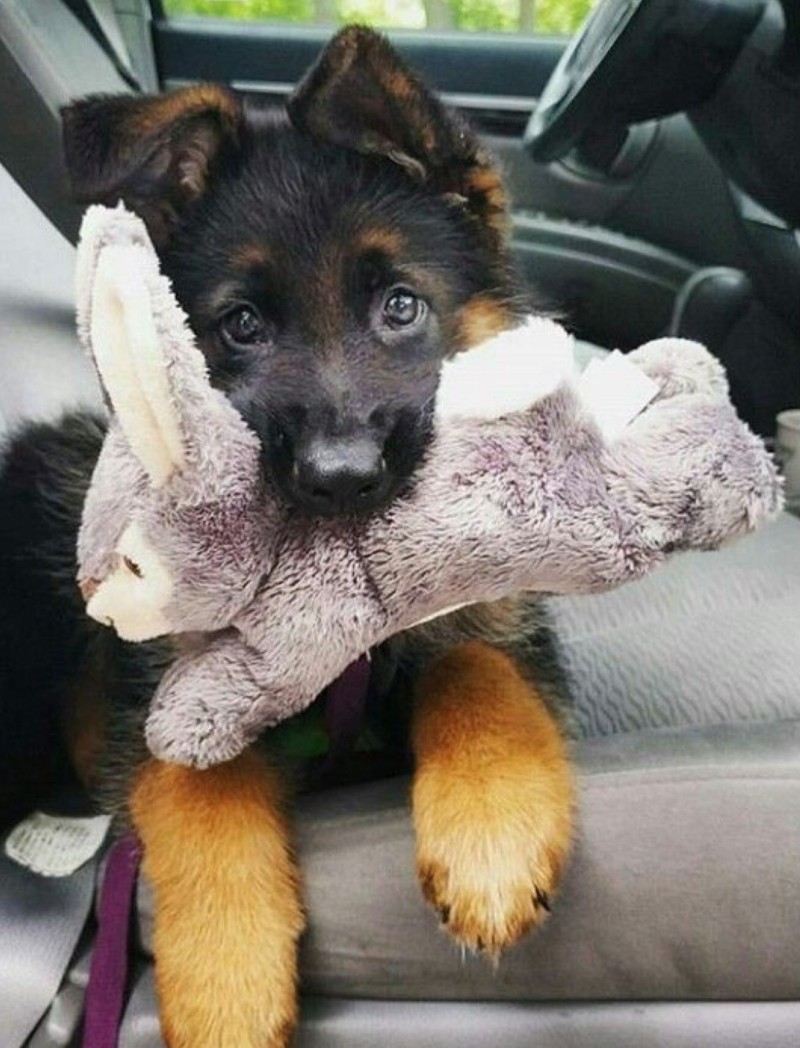
Where to Buy: Your One-Stop Shop for Dog Training Toys
Finding the right place to purchase dog training toys can be a game-changer for both you and your furry friend. Whether you’re looking for interactive puzzles, treat-dispensing toys, or classic chew toys, here’s how to find the perfect one-stop shop for all your dog training needs.
-
Online Marketplaces: The Convenience of ClicksOnline shopping platforms like Amazon, eBay, and Etsy offer a vast array of dog training toys from various brands and sellers. You can easily compare prices, read customer reviews, and filter your search based on your dog’s size, breed, and training goals. Plus, the convenience of home delivery can’t be beat.
-
Local Pet Stores: A Personal TouchLocal pet stores provide a unique advantage over online shopping. You can physically inspect the toys, get advice from knowledgeable staff, and often find a more personalized shopping experience. Plus, purchasing from local businesses can support your community.
-
Specialized Pet Retailers: Niche FindsFor those seeking high-end or niche training toys, there are specialized pet retailers that cater to the specific needs of your dog. These stores often have a curated selection of toys, including those for specific behaviors, such as anxiety relief or scent-based training.
-
Dog Training Centers: Toys with a PurposeMany dog training centers offer a range of toys specifically designed for training sessions. These centers often have a selection of toys that can be used in group classes or private training, making them a great resource for both the toy and the training itself.
-
Pet Supply Showrooms: The Largest SelectionFor those who love to explore and find unique items, pet supply showrooms can be a treasure trove. These stores typically carry a wide variety of products, including training toys, and you can find something that no one else has seen.
-
Themed Pet Stores: From Dogs to Cats and BeyondSome pet stores are themed around specific interests, such as the ocean, space, or nature. While these stores may not specialize in dog training toys, they often have creative and engaging toys that can enhance your dog’s training experience.
-
Thrift Stores and Garage Sales: Hidden GemsYou might be surprised at the quality and variety of dog training toys you can find at thrift stores, garage sales, or online marketplaces like Facebook Marketplace or Nextdoor. These places can be a great way to find unique toys at a fraction of the cost.
-
Online Forums and Pet Groups: Community RecommendationsEngaging with online forums and pet groups can lead to discovering hidden gems. Members often share their favorite products, including dog training toys, and you can get personal recommendations based on your dog’s specific needs.
-
Directly from Manufacturers: Support and WarrantyBuying directly from the manufacturer ensures you’re getting the highest quality product. Many manufacturers offer warranties and support, which can be invaluable if you encounter any issues with your purchase.
-
Subscription Boxes: Monthly VarietyIf you enjoy trying new things, subscription boxes for dogs can be a fun way to discover new training toys. Each month, you receive a curated selection of toys that can keep your dog’s training sessions fresh and engaging.
Remember to consider the following when shopping for dog training toys:
- Size and Strength: Ensure the toy is appropriate for your dog’s size and chewing intensity.
- Safety: Look for toys made from non-toxic materials and without small parts that could be swallowed.
- Durability: Invest in toys that are designed to withstand rigorous play and cleaning.
- Functionality: Choose toys that align with your dog’s specific training goals or behavior issues.
- Customization: Some toys offer customization options, such as treat sizes or resistance levels, to cater to your dog’s preferences.
With so many options available, finding the perfect one-stop shop for dog training toys should be a fun and rewarding experience. Whether you’re looking for a classic rope toy or a high-tech puzzle, the right shop will have exactly what you need to enhance your dog’s training journey.

